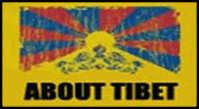

What is Longsho?
Longsho is an organisation endorsed by His Holiness The Dalai Lama to preserve Tibetan cultural identity among youths in exile through Jewish model of informal education. As the Tibetan civilization is facing with tremendous destruction in its own homeland under china’s occupation and in exile too, it is on the verge of extinction. Longsho tries to bring together all Tibetan youths in exile around the world to take pride, preserve Tibetan Buddhist culture and above all persuade strong connection with Tibet, which the China is trying to divide by categorizing exile Tibetans as Hindi speaking Tibetans. Longsho believe that only strong preservation of Tibetan culture in exile can keep the hope of Tibetan struggle for centuries. Besides Longsho also provide platform to young Tibetans to become responsible members of the Tibetan community and prepare for future leadership.
Longsho in Tibetan means to arise, to stand up. The star in the Longsho logo is the Jewish star of David. The two colors and the rising sun represent the Tibetan flag and its identity. Thus the logo represents the ongoing youth exchange of Inter Diaspora culture between Tibetan and Jews. These exchange programme are fully support by Tibetan Jewish Youth Exchange U,K (TJYE). The learning from the exchange programme and from the Jewish camps are the source of knowledge and inspiration to Longsho activities.
Longsho does not desire to be a political entity. We believe that, although it is hard to separate politics from identity, it causes a lack of attention from the individuals in their journey of making their own decisions and opinions about their lives.Longsho is entirely run by youths with two youth workers and bunch of youth volunteers. After very two years, new president and youth workers are elected giving platform to fresh youths graduate from universities. Longsho conducts training camps at school and collage level and those youths inspired after graduation join Longsho as youth workers and volunteers. These youth again inspire schools and college youths thus; Longsho works in a cyclic form maintaining it’s purely youth movement from one generation to another generation.
Although Longsho generates own fund through donation and photo exhibition however amount generated are too small to all perform all yearly activities thus Longsho depends on fund from National Endowment for Democracy, U.S (NED). We are heartily thankful to them.
What is informal education adopted by Longsho?
Although the education system has proved successful within the Tibetan community, there are still areas of young peoples' development, which it has been unable to penetrate. Since the formal education system inevitably holds limitations due to authoritative structure and rigid rules, which can result in less participation and lack of interest in learning, there are still visible gaps and needs within the Tibetan young people. These include the need for nurturing young peoples' personalities and ideas, as well as a need to focus on empowering the youths to become active, confident and to feel a sense of belonging in all parts of their lives. While the schools have their own roles, Longsho aims to give a sense of belonging and ownership to the young people. This need is not just in Dharamsala but also throughout the entire network of Tibetan settlements within India, Nepal and beyond.











